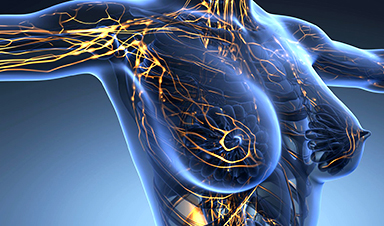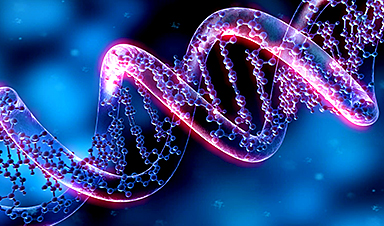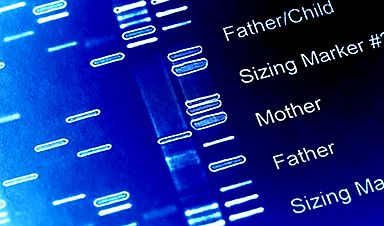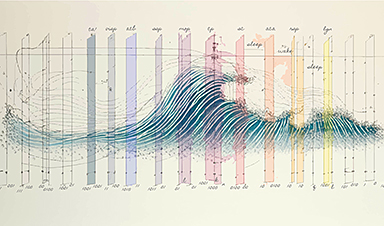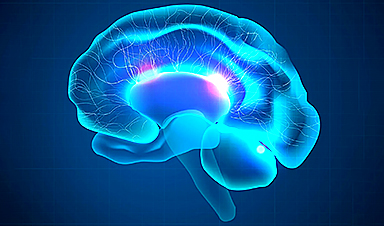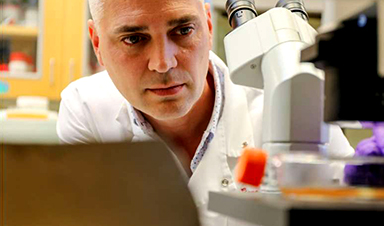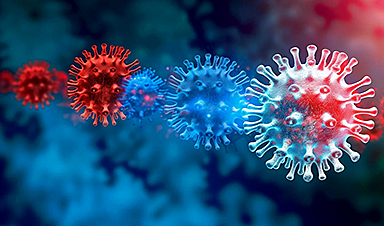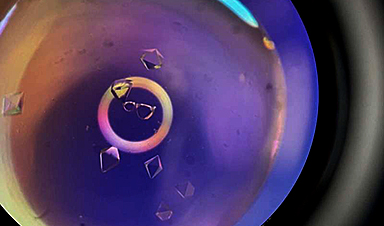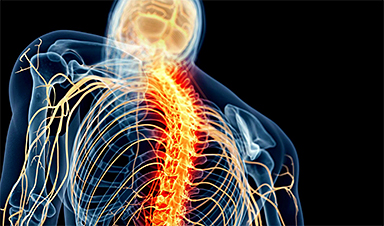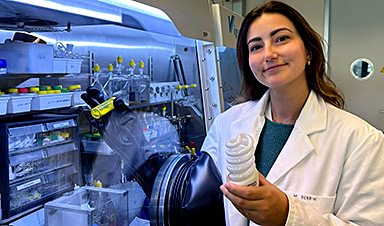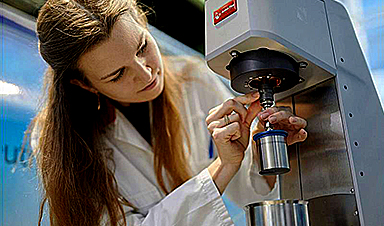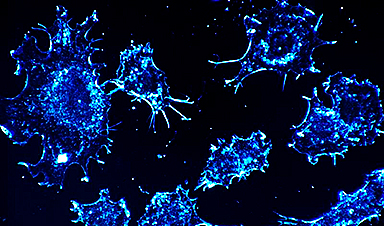The human body is made up of thousands of tiny lymphatic vessels that ferry white blood cells and proteins around the body, like a superhighway of the immune system. It’s remarkably efficient, but if damaged from injury or cancer treatment, the whole system starts to fail. The resulting fluid retention and swelling, called lymphedema, isn’t just uncomfortable—it’s also irreversible.
“With many patients, the challenge is that the lymphatic vessels that still exist in the patient aren’t working. So it’s not that you need to grow new vessels that you can think of as tubes, it’s that you need to get the tubes to work, which for lymphatic vessels means to pump,” said Brandon Dixon, a professor in the George W. Woodruff School of Mechanical Engineering. “That’s where our approach is really different. It delivers a drug to help lymphatic vessels pump using a nanoparticle that can drain into the diseased vessels themselves.”
The researchers published their findings, titled “Lymphatic-Draining Nanoparticles Deliver Bay K8644 Payload to Lymphatic Vessels and Enhance Their Pumping Function,” in Science Advances in February.
The benefit of nanotechnology for drug delivery
The drug the researchers used, S-(-)-Bay K8644 or BayK, normally targets L-type calcium channels that enable the skeletal, cardiac, and endocrine muscles to contract. In effect, the application of BayK throughout the body would lead to convulsions and spasms.
Using nanoparticles designed to drain into lymphatic vessels after injection focuses the drug solely into the lymphatic vessels, draining the injection site. As a result, the drug is available within lymphatic vessels at a locally high dose. When lymph is eventually returned into the circulation, it’s diluted in the blood so much that it doesn’t affect other systems in the body, making the drug for lymphedema applications both targeted and safe.
“Lymphatic tissues work like river basins—regionally you have vessels that drain the fluid out of your tissues,” said Susan Thomas, Woodruff Associate Professor of Mechanical Engineering in the Parker H. Petit Institute for Bioengineering and Bioscience. “This method is like putting nanoparticles in the river to help the river flow better.”
The research is the perfect blend of Dixon’s and Thomas’s respective areas of expertise. Dixon’s lab has been studying how lymphatics function in animal models for years. Thomas engineers nanoparticle drug delivery technologies that deploy in the lymphatic system.
“He develops analysis tools and disease models related to the lymphatic system, and I develop lymphatic-targeting drug delivery technologies,” Thomas said. “Tackling lymphedema as a widely prevalent condition for which there are no efficacious therapies was the perfect opportunity to leverage our strengths to hopefully move the needle on developing new strategies to serve this underserved patient population.”
Testing the therapy
The Dixon and Thomas lab teams tested the formulation using rodent models. They first mapped the model’s lymph node system by injecting a fluorescent substance to see how it traveled. Then they applied a pressure cuff to measure how the lymphatic system fails to function when compromised. From there, they evaluated how formulating BayK in a lymph-draining nanoparticle influenced the drug’s effects. The delivery system allowed the drug to act within the lymphatic vessel, as demonstrated by increased vessel pumping and restored pumping pressure, and drastically reduced the concentration of BayK in the blood, which is typically associated with unwanted side effects.
The researchers are expanding the formulation to more advanced disease models to move it closer to human application. They will also explore how it can be used to prevent or treat lymphedema in combination with other existing or new therapies now being developed.
News
The Silent Battle Within: How Your Organs Choose Between Mom and Dad’s Genes
Research reveals that selective expression of maternal or paternal X chromosomes varies by organ, driven by cellular competition. A new study published today (July 26) in Nature Genetics by the Lymphoid Development Group at the MRC [...]
Study identifies genes increasing risk of severe COVID-19
Whether or not a person becomes seriously ill with COVID-19 depends, among other things, on genetic factors. With this in mind, researchers from the University Hospital Bonn (UKB) and the University of Bonn, in [...]
Small regions of the brain can take micro-naps while the rest of the brain is awake and vice versa
Sleep and wake: They're totally distinct states of being that define the boundaries of our daily lives. For years, scientists have measured the difference between these instinctual brain processes by observing brain waves, with [...]
Redefining Consciousness: Small Regions of the Brain Can Take Micro-Naps While the Rest of the Brain Is Awake
The study broadly reveals how fast brain waves, previously overlooked, establish fundamental patterns of sleep and wakefulness. Scientists have developed a new method to analyze sleep and wake states by detecting ultra-fast neuronal activity [...]
AI Reveals Health Secrets Through Facial Temperature Mapping
Researchers have found that different facial temperatures correlate with chronic illnesses like diabetes and high blood pressure, and these can be detected using AI with thermal cameras. They highlight the potential of this technology [...]
Breakthrough in aging research: Blocking IL-11 extends lifespan and improves health in mice
In a recent study published in the journal Nature, a team of researchers used murine models and various pharmacological and genetic approaches to examine whether pro-inflammatory signaling involving interleukin (IL)-11, which activates signaling molecules such [...]
Promise for a universal influenza vaccine: Scientists validate theory using 1918 flu virus
New research led by Oregon Health & Science University reveals a promising approach to developing a universal influenza vaccine—a so-called "one and done" vaccine that confers lifetime immunity against an evolving virus. The study, [...]
New Projects Aim To Pioneer the Future of Neuroscience
One study will investigate the alterations in brain activity at the cellular level caused by psilocybin, the psychoactive substance found in “magic mushrooms.” How do neurons respond to the effects of magic mushrooms? What [...]
Decoding the Decline: Scientific Insights Into Long COVID’s Retreat
Research indicates a significant reduction in long COVID risk, largely due to vaccination and the virus’s evolution. The study analyzes data from over 441,000 veterans, showing lower rates of long COVID among vaccinated individuals compared [...]
Silicon Transformed: A Breakthrough in Laser Nanofabrication
A new method enables precise nanofabrication inside silicon using spatial light modulation and laser pulses, creating advanced nanostructures for potential use in electronics and photonics. Silicon, the cornerstone of modern electronics, photovoltaics, and photonics, [...]
Caught in the actinium: New research could help design better cancer treatments
The element actinium was first discovered at the turn of the 20th century, but even now, nearly 125 years later, researchers still don't have a good grasp on the metal's chemistry. That's because actinium [...]
Innovative Light-Controlled Drugs Could Revolutionize Neuropathic Pain Treatment
A team of researchers from the Institute for Bioengineering of Catalonia (IBEC) has developed light-activated derivatives of the anti-epileptic drug carbamazepine to treat neuropathic pain. Light can be harnessed to target drugs to specific [...]
Green Gold: Turning E-Waste Into a Treasure Trove of Rare Earth Metals
Scientists are developing a process inspired by nature that efficiently recovers europium from old fluorescent lamps. The approach could lead to the long-awaited recycling of rare earth metals. A small molecule that naturally serves [...]
Cambridge Study: AI Chatbots Have an “Empathy Gap,” and It Could Be Dangerous
A new study suggests a framework for “Child Safe AI” in response to recent incidents showing that many children perceive chatbots as quasi-human and reliable. A study has indicated that AI chatbots often exhibit [...]
Nanoparticle-based delivery system could offer treatment for diabetics with rare insulin allergy
Up to 3% of people with diabetes have an allergic reaction to insulin. A team at Forschungszentrum Jülich has now studied a method that could be used to deliver the active substance into the [...]
Nanorobot kills cancer cells in mice with hidden weapon
Researchers at Karolinska Institutet in Sweden have developed nanorobots that kill cancer cells in mice. The robot's weapon is hidden in a nanostructure and is exposed only in the tumor microenvironment, sparing healthy cells. [...]
